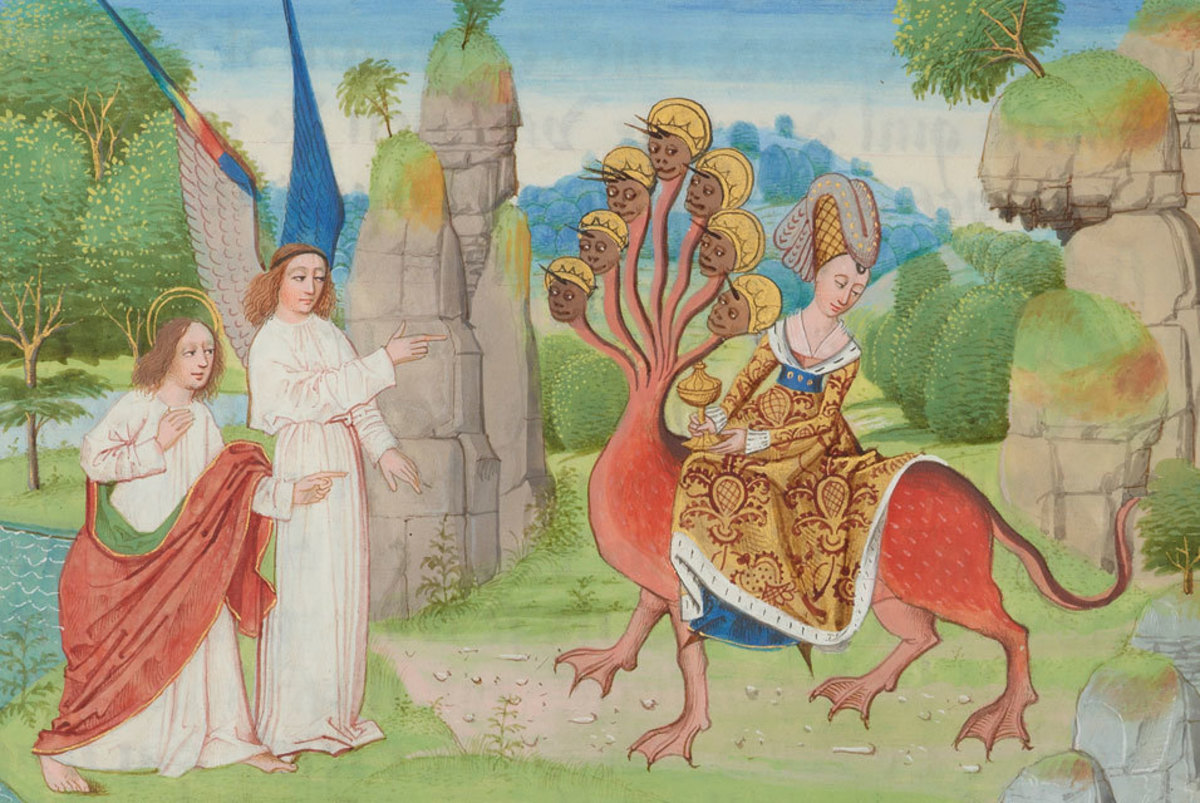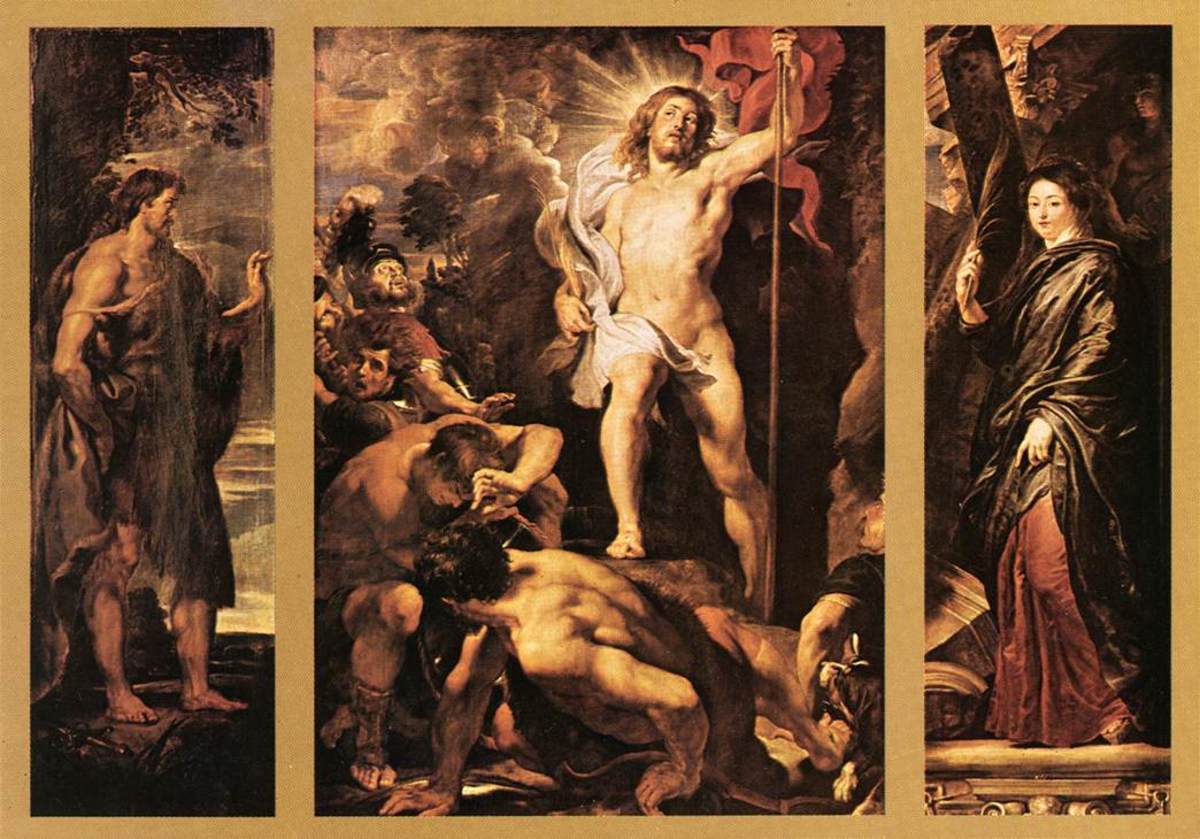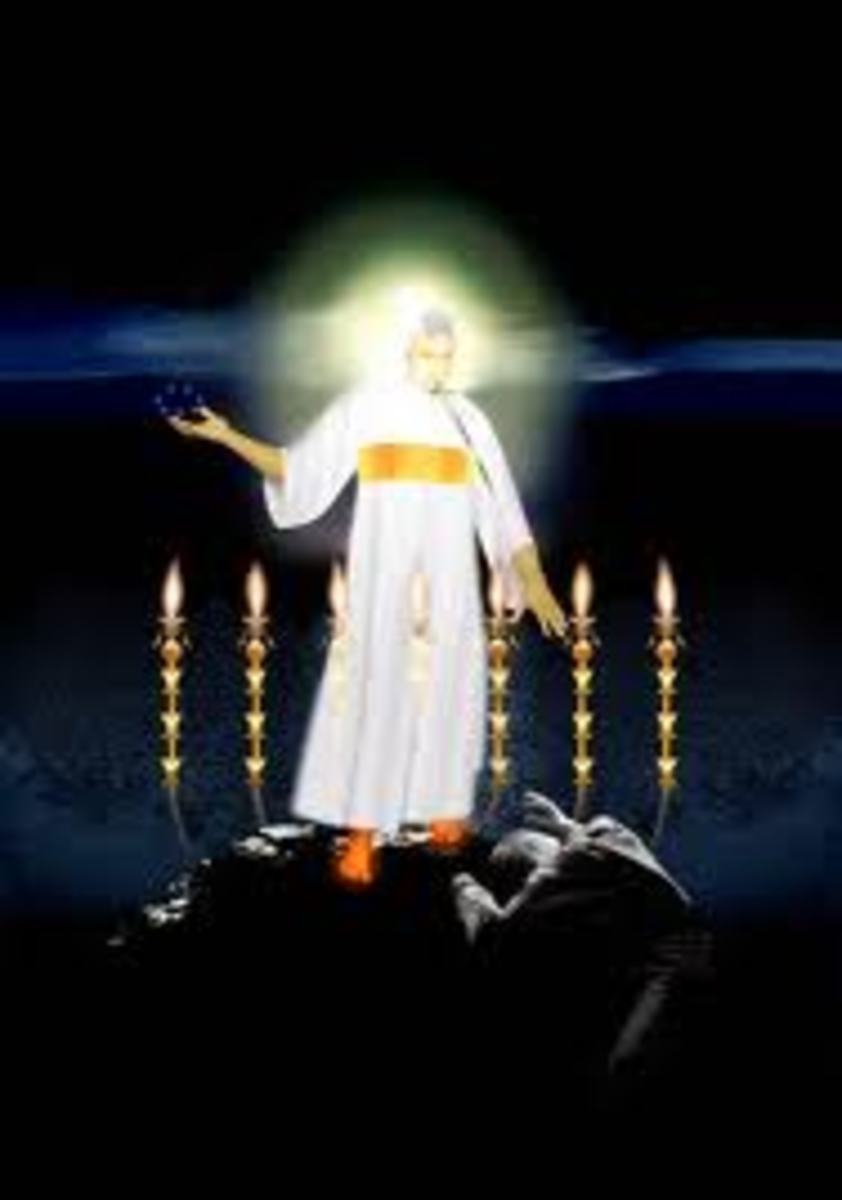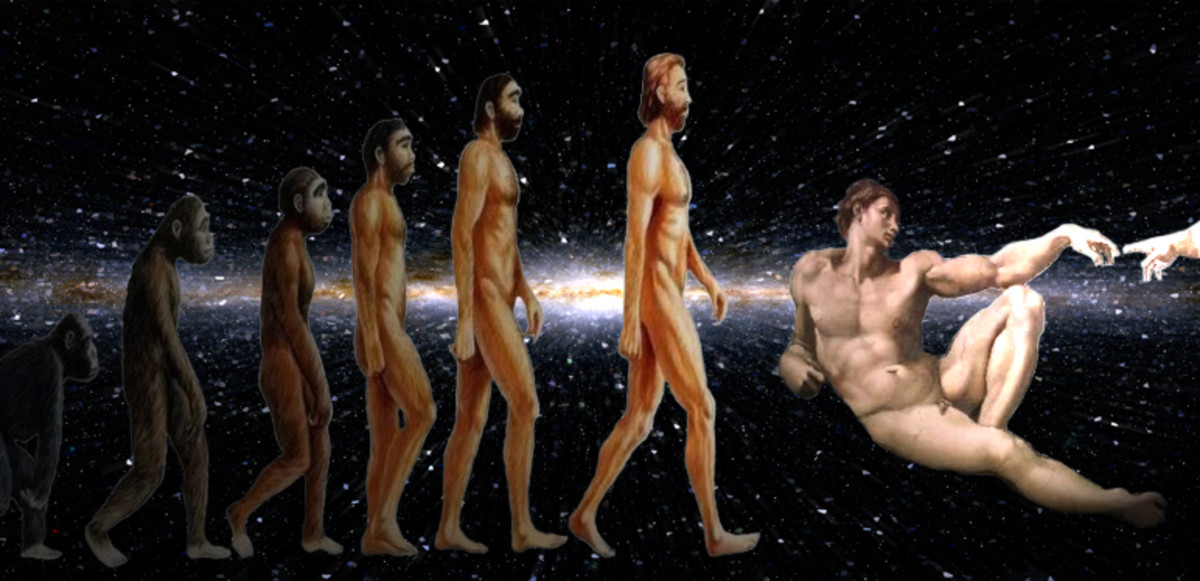Introducing the Seven Churches of Asia, I
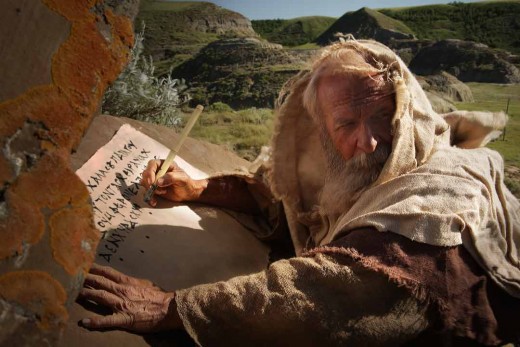
Companion in The Great Tribulation
1:9 I John, who also am your brother and companion in tribulation, and in the kingdom and patience of Jesus Christ, was in the island that is called Patmos, for the word of God, and for the testimony of Jesus Christ.
“I John.” ~ The author begins his introduction to the seven churches by identifying himself. This is the third time in this first chapter of the Revelation for him to do so. As we have pointed out in the Vital Data, Concerning the Author, the naming of the writer in this apocalyptic work was of great importance. This was true because of the nature of the material; that nature being prophecy.
For the prophet, the publishing of his revelation was a matter of great concern. The law demanded the life of the person who spoke in the name of God a thing that failed to come to pass (Deuteronomy 18:20-22):
"But the prophet, which presumes to speak a word in my name, which I have not commanded him to speak, … even that prophet shall die. And if thou say in thine heart, how shall we know the word which the LORD has spoken? When a prophet speaketh in the name of the LORD, if the thing follow not, nor come to pass, that is the thing which LORD hath not spoken, but the prophet hath spoken it presumptuously; thou shall not be afraid of him.”
Therefore, a prophet would be expected to stand by his predictions with his signature. By doing so he or she is saying, “I stake my life on the veracity of my words – literally.” John does just that; three times in this first chapter (vv1, 4, and 9), and once in the final chapter (22:8).
“Your ... companion in tribulation, and in the kingdom and patience of Jesus Christ.” ~ Along with the authors name we are given (in v9) three of the main themes of the book in the words: tribulation, kingdom, and patience.
Tribulation
The theme of tribulation surfaces in 2:9-10, 22 and again in 7:14. John identifies with the seven churches in the fellowship of “the” tribulation. He writes that he is their companion in “the tribulation” (tē thlipsei). The use of the article here indicates that this is the “Great Tribulation” predicted by Christ some 40 years earlier, and recorded by Matthew 24:21, 29. The article is used to designate persons, places, or things, apart from others of the same kind; thus, “the” tribulation designates this tribulation from all other tribulations. The word used here for companion is “sugkoinōnos” and means co-participant. That “the tribulation,” of which John spoke, was not of the garden variety (John 16:33) is illustrated in the rest of the verse, where he gives his address as the Isle of Patmos (a penal colony) “for the testimony of Jesus Christ.” I. e. for the testimony he had borne of Christ. The tribulation in view here, and 2:9-10, in the city of Smyrna, the tribulation threatened upon the unruly at Thyatira (2:22), and that which produces the “great multitude which no man can number,… arrayed in white robes” (7:9-14), is no doubt the “Great Tribulation” prophesied of by Christ Himself,
“For then shall be great tribulation, such as was not since the beginning of the world to this time, no, nor ever shall be.” And again, “immediately after the tribulation of those days shall the sun be darkened, and the moon shall not give her light, and the stars shall fall from heaven, and the powers of the earth shall be shaken:” (Matthew 24:21, 29). (A parallel passage to this is found in Mark 13:24.)
The language of Jesus in verse 21 (i.e. “For then shall be great tribulation such as was not since the beginning of the world to this time, no, nor ever shall be”) is an echo of Daniels works “… And there shall be a time of trouble, such as never was since there was a nation even into that same time” (Daniel 12:1). Further, it is this time of tribulation which is referenced by Jeremiah and called “Jacobs trouble” (Jeremiah 30:7).
Having, thus, establish the commonality of all these passages which have a “great tribulation” in view (and since there could not be two such times in which both are the worst that ever has been) it must follow that Jesus, Daniel, and Jeremiah have the same time of tribulation in view. This being true, it is possible to isolate a window of time in which the “great tribulation,” prophesied of by both Daniel and Jesus (Daniel 12:1 cf Matthew 24:21,29), was to be fulfilled. This window of possible fulfillment is given in Matthew 24:34 where Jesus says (just after predicting the “great” tribulation), “Verily, I say into you, this generation shall not pass, till all these things be fulfilled.” This window of opportunity was the generation that was contemporaries to Christ. This “time of Jacob’s trouble” saw Jerusalem razed and the temple destroy – in A.D. 70; just forty years after the prophecy of Jesus was given. During the last seven years of this time the apocalypse was written, both Peter and Paul were killed, John was exiled to the island of Patmos (a Roman penal colony), a war of extermination (ethnic cleansing) was prosecuted against the Jews, and the church saw great tribulation – all under the rule of Caesar Nero whose name has the numerical value of 666 (13:18):
“Here is wisdom. Let him that hath understanding count the number of the beast: for it is the number of the man, and his number is six hundred, threescore and six.”
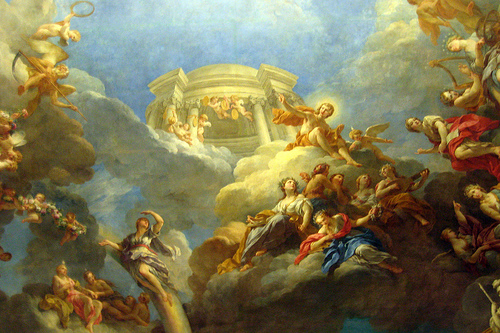
Companion in the Kingdom of God
Kingdon
The second apocalyptic theme found in verse 9 is that of the “Kingdom.” Kingdom references in the revelation are found at 11:15; 12:10; 16:10; 17:12, 17-18.
The “kingdom” theme of the revelation is the kingdom of the Lamb (11: 15 and 12:10) versus the kingdom of the Beast (16:10 and 17:12, 17-18). The visions of the book concern themselves with this struggle throughout the ages and presents the message of victory for the Lamb and those who follow Him (17:14): who are the called, and chosen, and faithful.
John presents himself as being a companion with the seven churches of Asia (v4) in the “kingdom… Of Jesus Christ.” He speaks of the present kingdom, not a future one. Now, Christ is the Greek for Messiah; this Kingdom then is the Kingdom of the Messiah. This being true, all the wealth of prophecies of the Old Testament concerning the messianic Kingdom find their fulfillment in the Kingdom of the Church in which both John and the Seven Churches were co-participants. The weight of this argument is that we must speak of the Messianic Kingdom in present terms. To bring this imagery into sharp focus notice its development, beginning from Daniel chapter 7.
The book of Daniel introduces the idea of the kingdom of men being represented by beasts. In chapter 7 of his prophecy, Daniel has a dream in which he saw four “great beasts”, “coming up from the Sea,” different “one from another.” Daniel tells us that “the first” beast “was like a lion,” the second “like a bear,” the third “like a leopard;” and the fourth beast he does not name but identifies as “dreadful and terrible and strong it exceedingly… diverse from all the beasts that were before, and it had ten horns.” These beasts are representative of kingdoms that will come upon the earth in the order they appeared to Daniel. The character of each kingdom is represented by the beast named for. It has long been understood that the beasts announce the kingdoms of Babylonia, Medo/Persia, Greece, and Rome respectively. Daniel’s “night visions” continue: he sees a fifth kingdom represented by a man. Verse 13 says, “I saw in the night visions, and behold, one like the son of man” (literally– “one like a human being”)… “And there was given him dominion and glory, and a kingdom, that all people, nations, and languages, shall serve him: his dominion is an everlasting dominion, which shall not pass away, and his kingdom that which shall not be destroyed.” (vv 13-14). (The KJV’s use of the term “Son of man” in this passage, should be understood in the usage of the same term by the prophet Ezekiel, i.e. a human person.) In this sense, Daniel’s fifth Kingdom is represented by human being, as opposed to the first four which were signified by beasts. The message here is the difference in character of the kingdoms of men (as the beasts) and the Kingdom of God’s Messiah (i.e. human).
Daniel’s vision of a human being receiving the kingdoms (that once belonged to the Beast) was fulfilled in the person of Jesus the Messiah (Christ). Even the casual reader of the Gospels cannot help but notice that Jesus appropriated the title “Son of Man” for himself. His every move, his every word and deed was announcing that he had come to establish the Kingdom that Daniel foresaw established in the Son of Man.
The Gospel of Jesus was the “Gospel of the Kingdom” (Matthew 4:23). He taught the mysteries of the Kingdom (Matthew 13:11). He proclaimed the Kingdom to be at hand (Matthew 4:17-10:7). The coming of the Kingdom was to permeate the disciples prayers (Matthew 6:10), of whom he chose twelve – the number of government. He, as King, appointed a prime minister in the person Peter, by giving him the keys of the kingdom (Matthew 16:19). His parables spoke of one who would go away to receive the Kingdom and would return (Lk 19:11). He told the high priest that he would, himself, see the Son of Man coming in His Kingdom (Matthew 16:28). The apostle Paul wrote to make the mystery plain by saying that God “has delivered us from the power of darkness, (kingdoms of the beast) and has translated us into the kingdom of his dear Son:” (Colossians 1:13). Thus, John can, here, write of his companionship with the saints in the Kingdom of the Messiah.
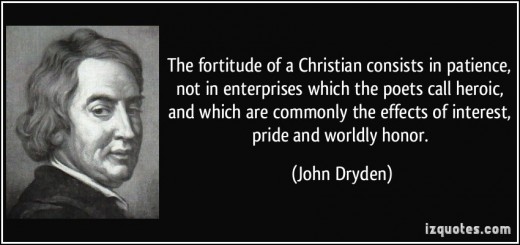
Companion in Patience
Patience
The third theme of the book referenced here is “patients.” The word translated patients is hupomonē, and speaks of: endurance with a cheerful constancy grounded in a sure hope. John has spoken of his companionship with the churches in tribulation, and also in the Kingdom of the Messiah; here he reminds them that he, too, is enduring each day with a cheerful heart—because of their common hope.
Their “hope” consist of the promises, from the God that cannot lie (Hebrews 6:18), of the ultimate triumph of the Kingdom of the Lamb over the kingdom of the Beast. Let us take a moment and look over the shoulder of the two principal prophets involved in this apocalyptic matter, and follow their quills as they move across their parchment with a holy scratching whisper:
Daniel:
7:21-22 “I was watching; and the same horn was making war against the saints, and prevailing against them, 22 until the Ancient of Days came, and a judgment was made in favor of the saints of the Most High, and the time came for the saints to possess the kingdom.
7:26:27 ‘But the court shall be seated, And they shall take away his dominion, To consume and destroy it forever. 27 Then the kingdom and dominion, And the greatness of the kingdoms under the whole heaven, Shall be given to the people, the saints of the Most High. His kingdom is an everlasting kingdom, And all dominions shall serve and obey Him.’
7:18 But the saints of the Most High shall receive the kingdom, and possess the kingdom forever, even forever and ever.’
7:9, 11 “I watched till thrones were put in place, And the Ancient of Days was seated; ... I watched till the beast was slain, and its body destroyed and given to the burning flame.”
John (Apocalypse)
2:7 “ ... To him who overcomes I will give to eat from the tree of life, which is in the midst of the Paradise of God.”’
2:11 “ ... He who overcomes shall not be hurt by the second death.”’
2:17 To him who overcomes I will give some of the hidden manna to eat.
2:26-27 And he who overcomes,... to him I will give power over the nations—27 ‘He shall rule them with a rod of iron;
3:5 He who overcomes shall be clothed in white garments, ... I will confess his name before My Father and before His angels.
3:12 He who overcomes, I will make him a pillar in the temple of My God, and he shall go out no more. I will write on him the name of My God and the name of the city of My God, ...
3:21 To him who overcomes I will grant to sit with Me on My throne,
11:15 ... And there were loud voices in heaven, saying, “The kingdoms of this world have become the kingdoms of our Lord and of His Christ, and He shall reign forever and ever!”
17:14 These will make war with the Lamb, and the Lamb will overcome them, for He is Lord of lords and King of kings; and those who are with Him are called, chosen, and faithful.”
19:20 Then the beast was captured, and with him the false prophet ... These two were cast alive into the lake of fire burning with brimstone.
Having their confidence in such hope, there is no wonder hupomonē describes the patiences with which they faced martyrdom. Their patience was not whimsical—it was consistent, it was not melancholy—but cheerful, it was not doubtful—it was hopeful. Thus, their flesh embraced the crosses, their necks shrank not from the blade, the living persons soaked with tar lights Nero’s circuses while chanting Jesus’s words, “you are the light of the world” (Matthew 5:14). All the while encouraging and admonishing “one another in psalms and hymns and spiritual songs.” They sang with Grace in their hearts to the backbeat of Roman drums and to the background noises of the Lion’s roar.
To this company John wrote “I am your companion!”
John was a charter member of this exclusive company for it was he, alone, who accompanied Jesus before Caiaphas; he, alone, stayed by His side (risking His same fate) until the bitter end; and he, alone, was the first apostle to the empty tomb. He could speak with austere conviction of his comradeship with the churches in their tribulation. For, he writes these words from the island Patmos where he had been banished because of the witness he bore for Christ. According to Tertullian, he had been brought to Patmos from Rome where he had been “plunged, unhurt, into boiling oil, and then exile on an island” (i.e. Patmos). (Prec. Her 36).
“Was in the island that is called Patmos, for the word of God, and for the testimony of Jesus Christ.” ~ Patmos was one the the Sporades Islands in the Aegean Sea, some 50 miles southwest of Ephesus (where tradition has John spending many years of his later life) and about 37 miles west southwest of Miletus. The island is about 10 miles long from north to south, and at its greatest width. at the north end, is about 6 miles. It consists of rocky volcanic hills. Such small islands of the Aegean Sea where used by the Romans as penal colonies for political types (Tacitus Annals 3.68; 4.30; 15.71). Thus, we have the historical setting of Patmos in the time of John. When he says that he was on Patmos “for the word of God and for the testimony of Jesus Christ” we do not suppose that he was in such a lonely place to preach the gospel, nor do we surmise that he took himself there in retreat to receive the Revelation. No. He was communicating with the persecuted churches in the “tribulation, and in the kingdom and patiences of Jesus Christ.” Compare 6:9; 20:4 where “word of God,” “witness,” and “testimony” are used in reference to a persecution situation.
While an ancient tradition (due to Eusebius – Hist III 18.1) has John banished to Patmos by Emperor Domitian in A.D. 95, and released 18 months later when Nerva became emperor (III. 20.8-9), an earlier date is not only possible but much more likely during the reign of Nero (54-68). The earlier date is preferred by this writer because of the internal evidence for it. And also because the external witnesses for the later date have not proven themselves to be totally trustworthy.
The crime against the state for which John was vanquished to Patmos was, without much doubt at all, his stand against emperor worship. This cult require all subjects of Rome to sacrifice to the emperor. The Jewish religion was exempt from this law, but the Christians soon lacked the protection of the Jewish synagogue (when the Christian break with Judaism became complete) and was therefore required to sacrifice on penalty of death; the true believers chose death. Just how John escaped martyrdom we are not told unless the account of Tertullian and the boiling oil is an indication (Presc. Her 36). (It must be stated here that it is quite possible, if not likely, that John was martyred—as George the Sinner and Philip of Side [The Interpreters Dictionary of the Bible, Abingdon Press © 1960, see John, Apostle] testifies; and as Jesus indicated would indeed happen (Mark 2:39.)
It was customary for the Roman senate to consecrate an emperor to godhood only after his death, but Caligula, Nero, Domitian, and Commodus proclaimed themselves gods while living. In A.D. 40 a temple with a priesthood was established in Rome to Caligula; Nero had himself portrayed as the god Apollo; but, it was Domitian who brought the worship of the Emperor into its own. During his reign (81-96) there were ten years of severe persecution of the church. Jesus warned the church at Smyrna (2:10) of this coming trial,
“Do not fear any of those things which you are about to suffer. Indeed, the devil is about to throw some of you into prison, that you may be tested, and you will have tribulation ten days. Be faithful until death, and I will give you the crown of life.”
(We will look closer at this passage in its proper place.)
Concerning emperor worship, it must be stated, here, that Christians were persecuted and very often kill, not because they worship Jesus, but because they worshiped “Jesus only.”
Apostolically Speaking
☩ Jerry Hayes
Bishop's Other Revelation Teachings
- Revelation's Greetings III
This article is an exegesis of Revelation 1:8; it concludes our introduction to the Revelation. Here Jesus is unveiled as the Almighty God . - Revelation's Greetings II
This article continues the John's greetings to the churches of Asia. The saints are called kings and priest, but are warned of a coming judgement. - Revelation's Greetings
The book of Revelation opens as an epistle. As such it contains an official greetings in verses 4 and 5. This article exegetes that greeting. - The Literary Form of the Book of Revelation
This article reveals the literary form of the book of Revelation. Such information goes a long way in helping the Bible student grasp the knowledge offered by this great book. - The Key to the Book of Revelation
So much depends on the order of sequence for the visions of Revelation that this question must be settled before any progress can be made is understand this all importunity manuscript. - The Message of Revelation 7:4-8
The biblical book of Revelation is apocalyptic literature and as such is cryptic in nature. There are messages encrypted within the text. The list of the twelve tribes delivers just such a message.

